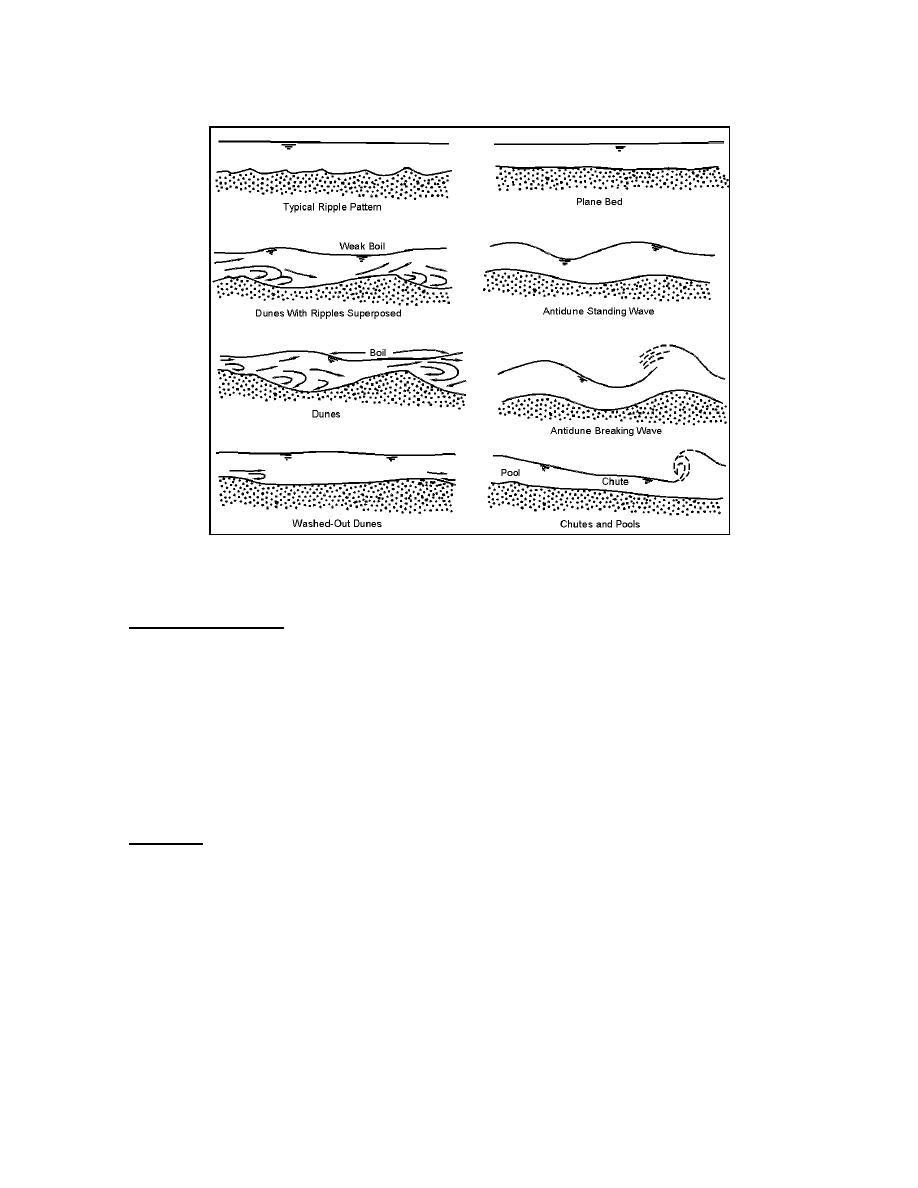
Lower Flow Regime
Upper Flow Regime
Figure 3.5. Forms of bed roughness in sand channels (Simons and Richardson 1963, 1966).
Lower Flow Regime. In the lower flow regime, resistance to flow is large and sediment
transport is small. The bed form is either ripples or dunes or some combination of the two.
The water-surface undulations are out of phase with the bed surface, and there is a relatively
large separation zone downstream from the crest of each ripple or dune. The most common
mode of bed material transport is for the individual grains to move up the back of the ripple or
dune and avalanche down its face. After coming to rest on the downstream face of the ripple
or dune, the particles remain there until exposed by the downstream movement of the dunes;
they repeat this cycle of moving up the back of the dune, avalanching, and storage. Thus,
most movement of the bed material particles is in steps. The velocity of the downstream
movement of the ripples or dunes depends on their height and the velocity of the grains
moving up their backs.
Transition. The bed configuration in the transition zone is erratic. It may range from that
typical of the lower flow regime to that typical of the upper flow regime, depending mainly on
antecedent conditions. If the antecedent bed configuration is dunes, the depth or slope can
be increased to values more consistent with those of the upper flow regime without changing
the bed form; or, conversely, if the antecedent bed is plane, depth and slope can be
decreased to values more consistent with those of the lower flow regime without changing
the bed form. Often in the transition from the lower to the upper flow regime, the dunes
decrease in amplitude and increase in length before the bed becomes plane (washed-out
dunes). Resistance to flow and sediment transport also have the same variability as the bed
configuration in the transition. This phenomenon can be explained by the changes in
resistance to flow and, consequently, the changes in depth and slope as the bed form
changes. Resistance to flow is small for flow over a plane bed; so the shear stress
decreases and the bed form changes to dunes. The dunes cause an increase in resistance
to flow which increases the shear stress on the bed and the dunes wash out forming a plane
3.14




 Previous Page
Previous Page
